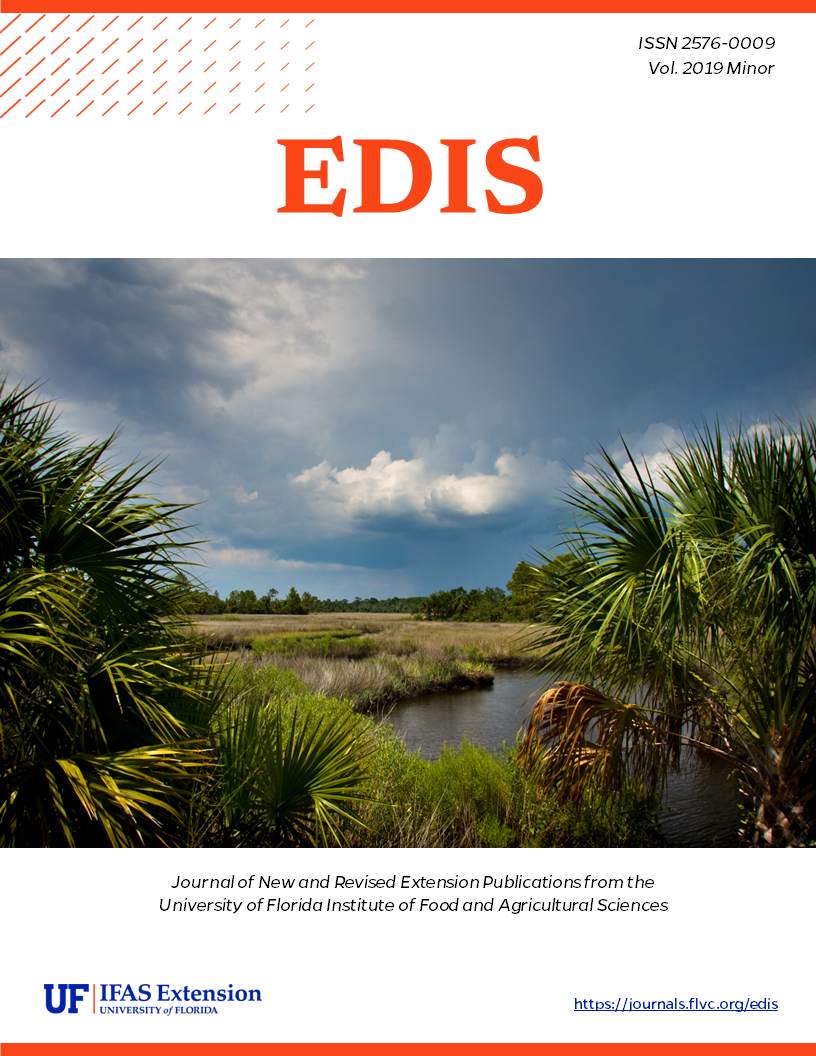Abstract
Land application of aluminum-based WTRs (Al-WTR) has been demonstrated to effectively control off-site phosphorus loss to surface and groundwater. Therefore, amending soil with Al-WTR could be a best management practice (BMP) to reduce off-site P losses from agricultural fields via runoff and leaching. However, environmental concerns that the aluminum and arsenic contents of Al-WTRs could negatively affect agricultural production and human health have led to the development of guidelines for land application of WTRs in Florida. This 8-page document explores possible effects of land-applying Al-WTR on the environment and recommends practices to minimize environmental or human and animal health risk. Target audiences include state agencies like FDEP, FDACS, water management districts trying to use Al-WTR to control P pollution, and those interested in nutrient management for environmental purposes. Written by Jonathan D. Judy, Maria L. Silveira, Sampson Agyin-Birikorang, and George A. O’Connor, and published by the UF/IFAS Department of Soil and Water Sciences, June 2019.
SL 299/SS512: Are Alum-Based Drinking Water Treatment Residuals Safe for Land Application? (ufl.edu)

